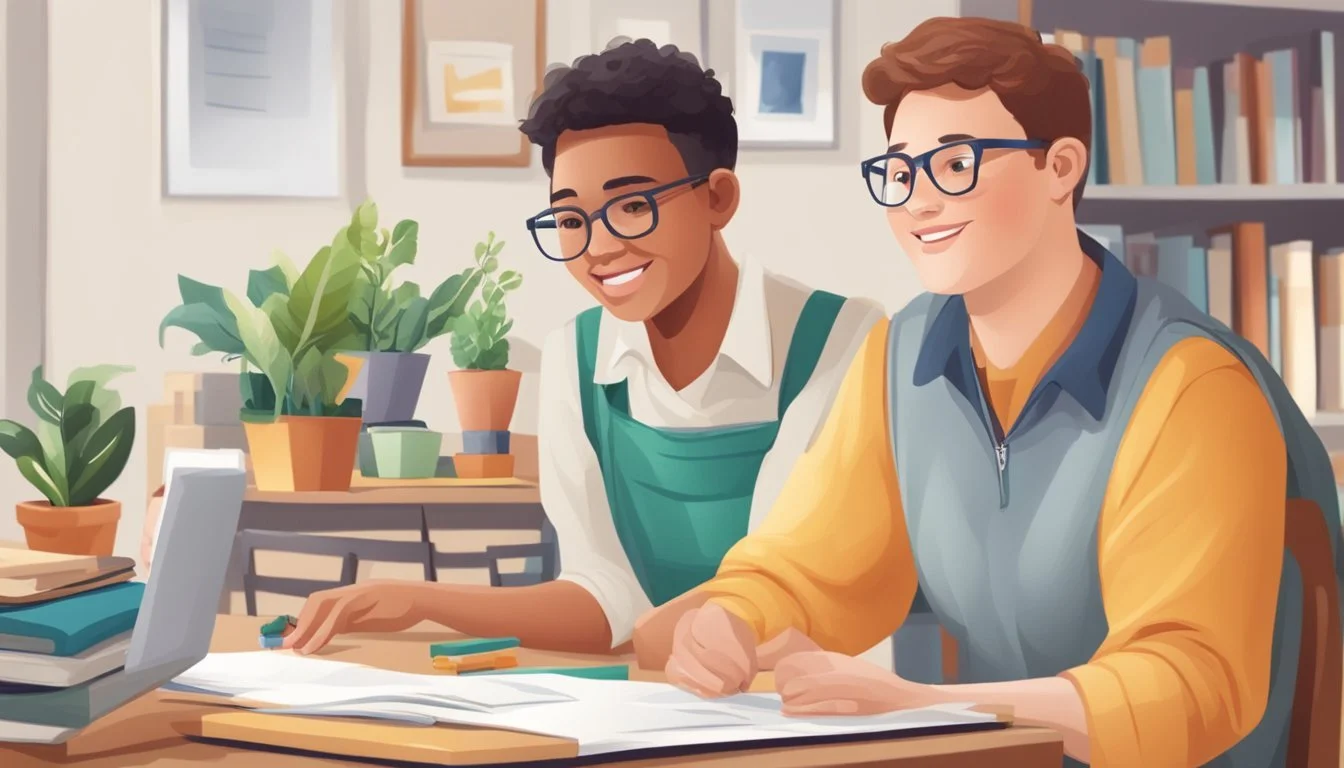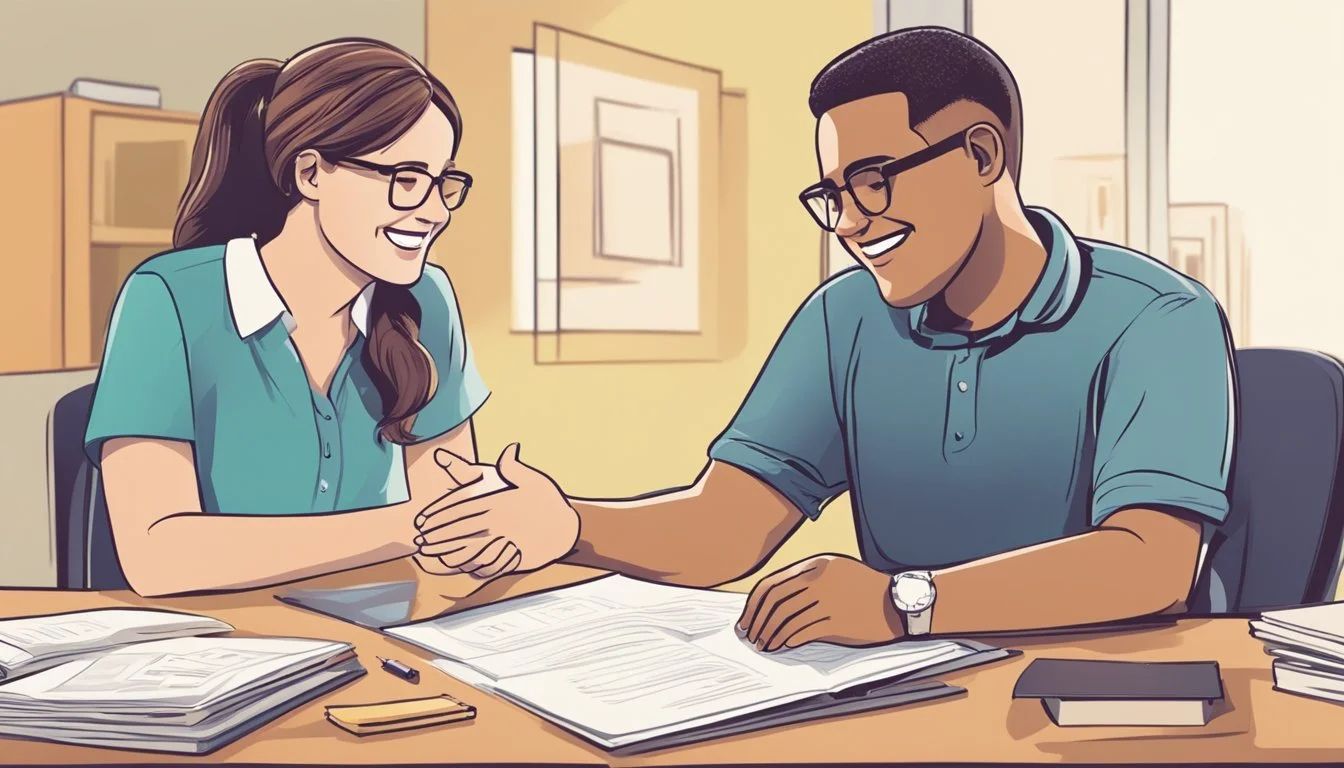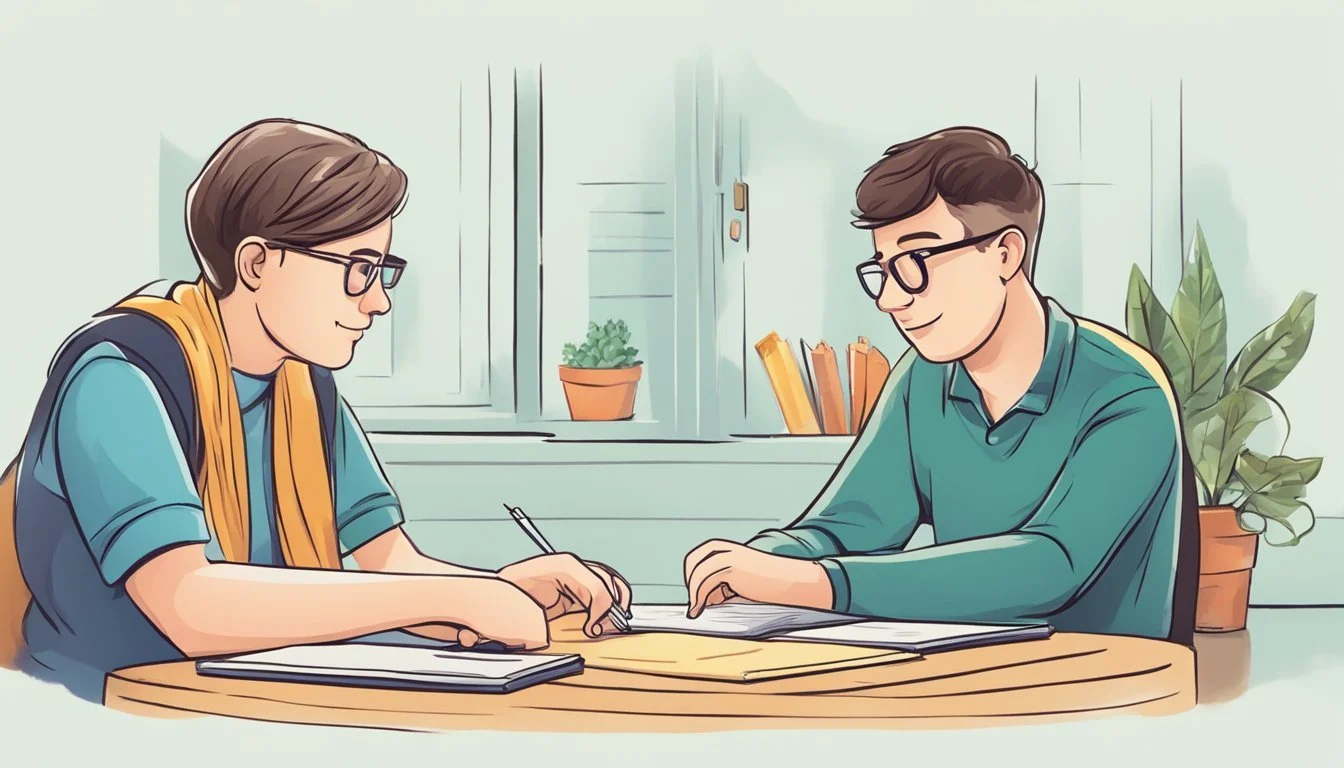7 Ways to Support a Partner with a Learning Disability
Practical Tips for Meaningful Assistance
Supporting a partner with a learning disability requires understanding, patience, and effective communication. When both partners are committed to navigating challenges together, the relationship can grow stronger and more resilient. Learning how to provide meaningful assistance can significantly improve the quality of life for both partners.
It's essential to remember that every individual's experience with a learning disability is unique, which means tailored approaches are necessary. Building strong emotional and practical support systems can empower individuals with learning disabilities to thrive in their personal and shared lives.
1) Be patient and understanding
Being patient and understanding is essential when supporting a partner with a learning disability. They may require more time to grasp new concepts or complete tasks that others might find simple. Patience fosters a supportive environment, allowing them to feel comfortable and valued.
Communication is another crucial factor. Speaking slowly and clearly, using easily understandable words, can make a significant difference. This approach is effective, particularly when discussing important matters or giving instructions.
It's important to remember that everyone learns at their own pace. Encouraging your partner without rushing them and celebrating their achievements, no matter how small, can build their confidence and motivation.
Understanding that frustration and setbacks are part of the learning process can prevent negative emotions from creating a barrier. Providing reassurance and encouragement helps maintain their determination and self-esteem.
Avoid using jargon or overly complex language that might be confusing. Instead, opt for straightforward, accessible communication. This approach ensures that your partner can fully engage in conversations and activities without feeling excluded or overwhelmed.
Maintaining eye contact and active listening shows that you value their thoughts and feelings. This reinforces that they are an equal partner in the relationship, strengthening your connection and mutual respect.
2) Use Clear and Simple Language
When supporting a partner with a learning disability, clear and simple language is crucial. Avoid complex sentences and jargon. Instead, use straightforward vocabulary to ensure that your message is easily understood.
Short sentences can help break down information into digestible chunks. This minimizes confusion and keeps the conversation on track. Clear instructions are especially beneficial.
Using concrete terms instead of abstract concepts is also helpful. For example, rather than saying “later,” specify a time like “in 30 minutes.” This reduces ambiguity and allows for better comprehension.
It’s equally important to check in regularly to confirm understanding. Questions like “Do you follow?” or “Does this make sense?” can provide clarity and foster better communication.
Visual aids can be very effective. Some individuals with learning disabilities respond well to visual cues, which can complement verbal instructions. Simple gestures or drawings can further clarify your points.
Maintaining an encouraging tone is essential. Positive reinforcement helps build confidence and makes communication more effective. Be patient and give them ample time to respond.
For more tips on effective communication, visit this guide on communicating with adults with a learning disability.
3) Provide Consistent Routines
Consistent routines are essential for individuals with learning disabilities. Regular daily routines help them anticipate what will happen next, which reduces anxiety and enhances their sense of security. Stability in daily events ensures a predictable environment, supporting emotional and mental well-being.
Creating routines might include setting specific times for meals, activities, and rest. For instance, establishing a morning routine can give a structured start to the day. This might involve simple steps like brushing teeth, dressing, and breakfast at the same time each day.
Incorporating visual schedules or checklists can be beneficial. Visual aids offer clear, step-by-step guidance, aiding in understanding and follow-through. Visual schedules, incorporating images and icons, can be especially effective for those who struggle with reading.
Using cues such as alarms and timers can also help. These tools can signal transitions between activities, making it easier for the individual to switch tasks smoothly and without stress.
Involving the individual in the creation of their routine can foster a sense of ownership and independence. Using input from the person ensures that the routine aligns with their preferences and needs.
Adopting consistent routines helps manage expectations and provides a structured framework for daily living. This structured approach is highlighted by the NHS Lanarkshire as crucial for people with learning disabilities. By maintaining these routines, caregivers and partners can support a more predictable and less stressful environment.
4) Offer Step-by-Step Instructions
Providing clear and concise step-by-step instructions can be invaluable for a partner with a learning disability. Detailed guidance helps break down tasks into manageable parts, easing anxiety and enhancing comprehension.
Using simple, straightforward language avoids overwhelming them. Each step should be brief yet clear, ensuring clarity without unnecessary complexity.
Visual aids, like diagrams or charts, can complement verbal instructions. These tools can provide additional context, aiding in better understanding.
Making instructions repeatable and consistent is crucial. Repetition strengthens familiarity, making the process smoother over time.
Encourage questions and provide clarifications whenever needed. Creating an open environment promotes confidence and reduces frustration.
Adapting instructions to fit their unique learning style demonstrates genuine support and makes the process more effective. Adapting to their pace and preferences ensures better results.
5) Encourage Self-Advocacy
Encouraging self-advocacy is crucial for individuals with learning disabilities. Self-advocacy empowers them to express their needs and seek support effectively. This skill not only boosts their confidence but also promotes independence.
Partners can support self-advocacy by first helping their loved ones understand their own learning disabilities. They should encourage open conversations about strengths, weaknesses, and specific needs in different situations.
Providing access to resources and tools that facilitate self-advocacy is beneficial. Websites like the Child Mind Institute offer strategies and advice on how to speak up for oneself. Partners can explore these together, ensuring understanding and application in daily life.
Another way to support self-advocacy is by practicing scenarios where the individual may need to advocate for themselves. Role-playing can help in rehearsing how to communicate specific needs in various settings such as school, work, or social situations.
Partners should also consider connecting their loved ones with self-advocacy groups. Resources like the Center for Parent Information and Resources provide maps and contacts for local self-advocacy groups, which can offer support networks and real-life examples.
Consistently reinforcing the importance of self-advocacy and celebrating small successes can motivate individuals to continue developing this essential skill.
6) Celebrate Small Achievements
Recognizing and celebrating small achievements can significantly boost a partner's self-esteem. These accomplishments, no matter how minor they may seem, reinforce positive behaviors and encourage continued effort.
Simple, everyday tasks like completing a chore or learning a new skill can be highlighted. This recognition can take the form of verbal praise, a small treat, or a handwritten note.
Celebrating achievements also cultivates a sense of competence. Feeling supported and recognized for their efforts helps individuals with learning disabilities build confidence and resilience. This approach makes them feel valued and appreciated, fostering a positive mindset.
Sharing these celebrations with family and friends can strengthen relationships. It provides an opportunity to express pride in their progress and to create a supportive environment that encourages further growth.
Building a habit of acknowledging these victories transforms everyday struggles into moments of success. This practice not only benefits the person with the learning disability but also enriches the relationship, creating a more positive and encouraging atmosphere.
Actions such as these help to create an environment where the partner feels understood and supported. More on this topic can be found at GreatSchools.
7) Use visual aids and tools
Visual aids can significantly help individuals with learning disabilities understand and retain information. These tools include picture schedules, graphic organizers, and visual instructions, which can be used to outline daily routines or complex tasks.
In a classroom, visual behavior supports such as behavior contingency maps and visual behavior contracts can help manage expectations and provide clear guidelines. These methods offer predictable structures, which can reduce anxiety.
Picture schedules and calendars are effective tools for breaking down activities and deadlines. They present information in a simple format, making it easier for individuals to navigate their day. Environmental picture cues and labeling can also provide guidance and ensure that spaces are organized and accessible.
Voice recognition software and audio descriptions aid students with visual impairments, allowing them to interact with digital content more easily. Using tools that convert verbal commands into digital actions can help bridge the gap in accessibility.
Break cards and "I need a break" cards are valuable for managing stress and preventing burnout. They offer a visual reminder for the need to pause, helping individuals regulate their emotions and stay focused.
These visual tools and aids create supportive environments that cater to the unique needs of those with learning disabilities. By consistently incorporating them, it becomes easier to enhance understanding and communication in various settings.
Understanding Learning Disabilities
Learning disabilities impact various aspects of life, including personal relationships. Recognizing the types of learning disabilities and the challenges faced by those affected can help partners provide better support and understanding.
Definition and Types of Learning Disabilities
Learning disabilities are neurological conditions that affect how individuals process information. They are not indicative of intelligence levels.
Common types include:
Dyslexia: Issues with reading and related language-based processing skills.
Dyscalculia: Problems with mathematical concepts and operations.
Dysgraphia: Difficulties with handwriting and fine motor skills.
Auditory Processing Disorder (APD): Trouble with processing auditory information.
Other conditions like ADHD and language processing disorders can also overlap with learning disabilities. Awareness of these various types is crucial for effective support.
Common Challenges Faced by Partners with Learning Disabilities
Individuals with learning disabilities often face unique challenges that can affect their daily lives and personal relationships.
They may struggle with tasks requiring reading or writing, leading to frustration and misunderstandings. In social settings, difficulties with communication and comprehension can cause stress.
Partners might find it hard to understand these challenges, leading to feelings of isolation for the person with the learning disability. Tasks may take longer, requiring patience and accommodation from both partners. For instance, those with dyslexia might need extra time to read important documents or emails.
Awareness and empathy are key to navigating these challenges effectively.
Effective Communication Strategies
Supporting a partner with a learning disability calls for specific communication strategies. These focus on active listening and reading non-verbal cues to ensure their needs and concerns are clearly understood.
Active Listening Techniques
Active listening involves more than just hearing words; it requires engaging with the speaker and providing feedback. Simplify language without being patronizing. Use short sentences and direct phrases. Avoid jargon that might be confusing.
Maintain eye contact and nod to indicate understanding. Confirm comprehension by paraphrasing what was said. Ask open-ended questions like “How do you feel about this?” to encourage more detailed responses.
Limit distractions during conversations to maintain focus. Use tools such as visual aids or written notes which might help clarify complex ideas.
Non-Verbal Communication Cues
Non-verbal cues play a vital role in communication. They include facial expressions, body language, and gestures. Pay attention to these cues to gauge feelings and reactions.
Maintain a relaxed and open posture to create a comfortable environment. Avoid crossing arms or looking away, which can signal disinterest or frustration.
Use gestures and facial expressions that match your words. For example, smiling when discussing something positive reinforces the message. Ensure that your expressions are genuine and clear.
Utilize tools like sign language or picture cards if your partner is familiar with them, which can bridge any communication gaps. Using these techniques ensures that all forms of communication are catered to effectively.







